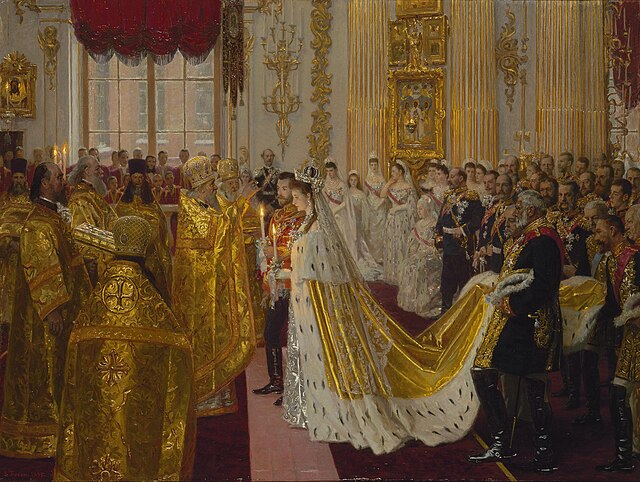Royal intermarriage is the practice of members of ruling dynasties marrying into other reigning families. It was more commonly done in the past as part of strategic diplomacy for national interest. Although sometimes enforced by legal requirement on persons of royal birth, more often it has been a matter of political policy or tradition in monarchies.
The Habsburg Philip II of Spain and his wife, the Tudor Mary I of England. Mary and Philip were first cousins once removed.
The wedding of Nicholas II of Russia and Alix of Hesse, second cousins through their shared great-grandparents Louis II, Grand Duke of Hesse, and Wilhelmine of Baden
Louis XIV of France and Philip IV of Spain meeting at the Isle of Pheasants for the signing of the Treaty of the Pyrenees, which, in part, arranged the marriage of Louis with Philip's daughter Maria Theresa.
The wedding photo of Crown Prince Yi Un of Korea and Japanese Princess Masako of Nashimoto
A marriage of state is a diplomatic marriage or union between two members of different nation-states or internally, between two power blocs, usually in authoritarian societies and is a practice which dates back into ancient times, as far back as early Grecian cultures in western society, and of similar antiquity in other civilizations. The fable of Helen of Troy may be the best known classical tale reporting an incidence of surrendering a female member of a ruling line to gain peace or shore up alliances of state between nation-states headed by small oligarchies or acknowledged royalty.
The marriage of the Duke of Burgundy to Marie Adélaïde of Savoy on December 7, 1697 by Antoine Dieu





